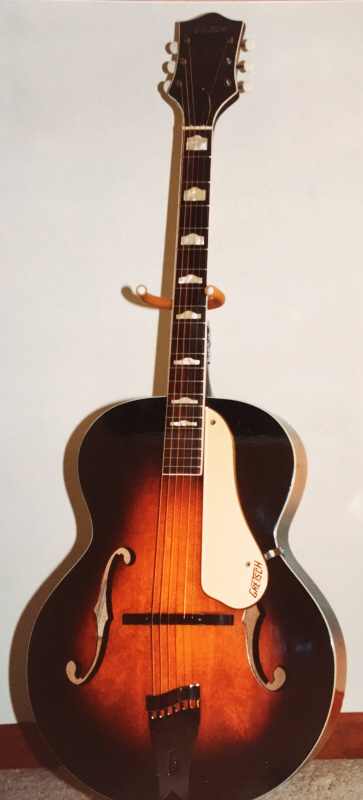
FACTOIDS AND TRIVIA
Gretsch attempted to go head to head with Gibson and Epiphone in the acoustic archtop market in the 1930s and 40s. Gretsch failed even with endorsements from famous jazz artists such as Harry Volpe and Django Rheinhardt. Gretsch guitars during this time period did not have truss rods and no musician wanted a guitar with a neck that could not be adjusted. World War II also hurt any momentum that may have been gained by the "Gretsch 7 Points of Supremacy" advertising campaign. In response to poor sales Gretsch dropped all, but four, of its acoustic archtops in the early 1950s. Hence, Gretsch acoustic archtops of any kind are considered rare or uncommon. The Corsair was in the Gretsch lineup from 1955 to 1959 as a non-cutaway model and from 1960 to 1969 as a cutaway model.GRETSCH 6040 CORSAIR (1957)

Body: Hollow; laminated pressed spruce top, laminated maple back and sides; single bound top and back
Finish: Sunburst, nitrocellulose lacquer
Neck: 3-piece flame maple/rosewood, set-in; single bound mahogany headstock overlay with pearloid logo
Fingerboard: Brazilian rosewood, single bound; pearloid "hump block" markers
Number of Frets: 21
Pickguard: Acrylic
Bridge: Rosewood on rosewood base; chrome Gretsch tailpiece
Nut: Plastic
Tuners: Waverly, open, nickel with plastic buttons
Pickups: None
Controls: None
Scale Length: 25 1/2 inches
Neck Width at Nut: 1 11/16 inches
Body Width at Lower Bout: 16 inches
Body Depth: 3 3/8 inches
Weight:
n/a